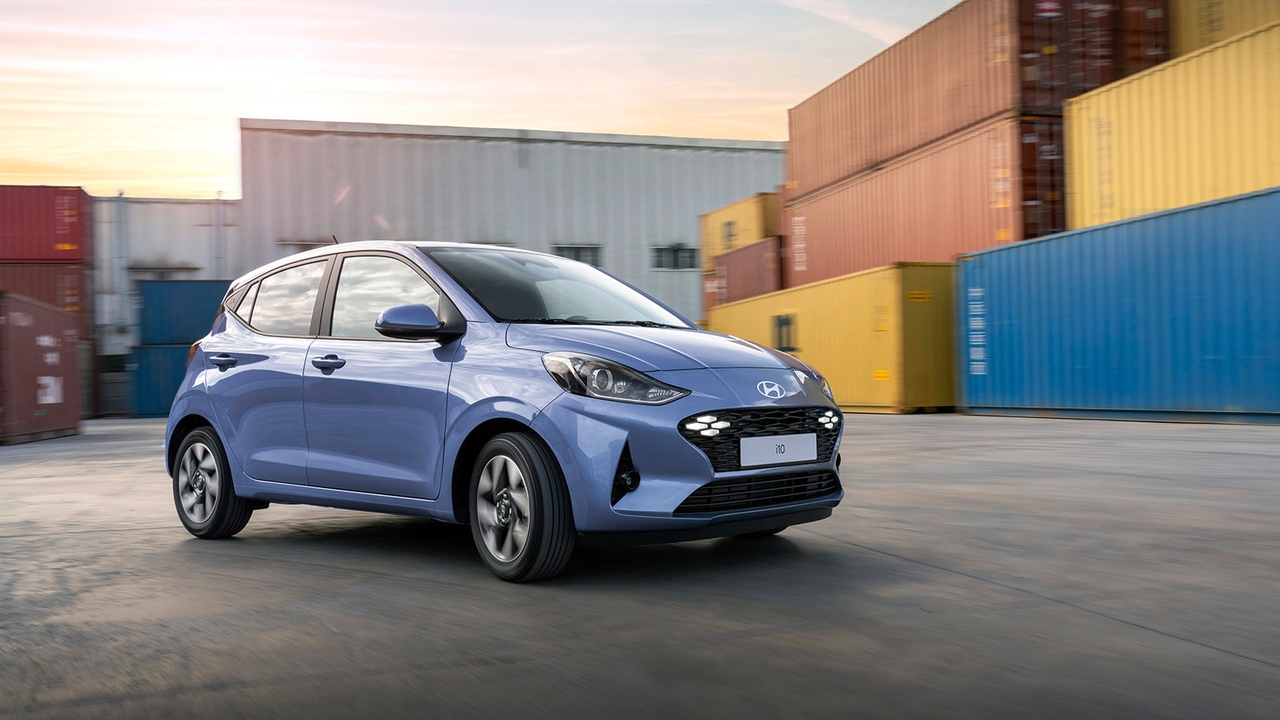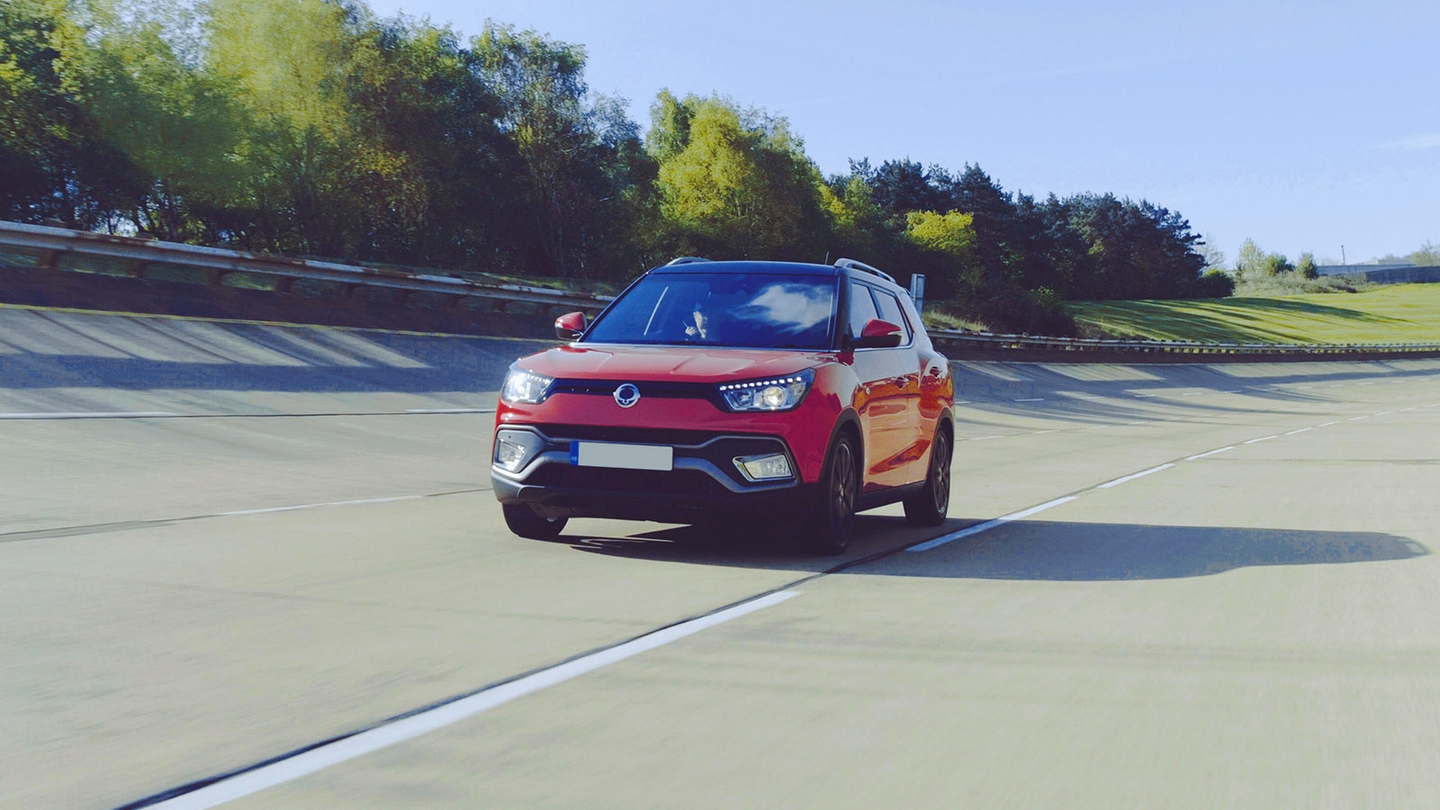Lane-keep assist is an active safety system on modern cars. It works out where the edges of your lane are and monitors your position between the lines.
If you start to drift out of your lane, the system will detect this – most will flash up a warning telling you to correct your steering. If this warning is ignored, lane-keep assist can tug the steering wheel back in line to stop you veering into the next lane over.
How does lane-keep assist work?

Most lane-keep assist systems use one or two front-facing cameras, usually built into the rear-view mirror housing. These cameras 'look' at the road ahead, feeding the image to a clever on-board computer that works out where the edges of your lane are. Usually, lane-keep assist systems work best when there are lane lines painted on the road surface, but some smarter setups can work out where your car should be even if you're on older, unpainted roads.
With the boundaries of your lane established, the system can then spot any time you start to drift over the lines. If this happens, lane-keep assist can use your power steering to actively pull you back into the middle of the lane.
Some lane-keep assist systems will give a visual warning in the driver's dials and an alert sound before activating, aiming to have the driver take corrective action before the system needs to. However, other systems will simply start tugging the steering back into line if it senses you drifting away, with no prior warning.
Is lane-keep assist different from lane-departure warning?

Yes. Lane-keep assist and lane-departure warning are similar but subtly different setups. The key distinction is that lane-keep assist can physically turn the steering wheel and pull the car back into line to avoid a crash. Conversely, lane-departure warning will flag up an alert if it detects you straying from your lane, but cannot physically steer the car if the driver fails to act.
Lane-keep assist is the more complex of the two systems so is more common on mid-range and premium cars, while lane-departure warning is often found on more affordable models. Lane-keep assist setups use a lot of the same hardware as semi-autonomous driving systems like Tesla's Autopilot, so cars with these driver aids will invariably include lane-keep assist as standard.
Should I keep lane-keep assist on?

Yes. In the majority of day-to-day driving situations, there's no reason to turn your lane-keep assist system off. The system provides a second set of eyes that's constantly on the lookout keeping you safe on the road. Even the best drivers make mistakes so you should use all the tools at your disposal to protect you, your passengers and your car.
The most common reason drivers turn lane-keep assist off is when it gets confused by unconventional road setups. Old, twisty and tight roads might require you to cross lane lines to navigate between parked cars or through tight gaps, and this can sometimes confuse lane-keep assist setups. This can cause them to tug at the wheel while you're already fully in control of the situation, which can be quite annoying. Despite this, we still think it's worth putting up with the occasional false positive from the system for the extra safety it brings.
How to turn lane-keep assist off

The method for turning lane-keep assist off varies from brand to brand, and model to model. However, almost all cars will let you turn the system off, either using a physical button on the dashboard, or by navigating through menus in the car's infotainment system.
If your car has a button to control the lane-keep assist, you'll be able to spot it through the image printed on it. The icon invariably shows a car or a steering wheel between two converging lane lines – in practice, they look like a forward slash and a backward slash. You'll either need to press or hold this button to disengage the lane-keep assist.

Some cars don't include a physical button and, instead, let you adjust the system using the infotainment screen. While the exact menu structure differs between brands and models, you're usually looking for the vehicle settings or active safety menu. From there, you should be able to locate the lane-keep assist system and deactivate it.
Lots of older and current cars will 'remember' this setting the next time you start the car, so you won't have to turn lane-keep assist off again. However, safety mandates in Europe mean that newer models will have to enable lane-keep assist by default every journey, so you'll have to turn it off every time you start the car if you permanently don't want to use it.
Pros and cons of lane-keep assist
Pros
- Enhances your safety
- Reduces risk to other road users
Cons
- Occasionally gets confused by unconventional roads
- Tugging sensation on wheel can be alarming
Which cars come with lane-keep assist?

It'd be easier to list the cars that don't come with lane-keep assist. The system is widely installed across models in nearly every segment from the compact Hyundai i10 to the luxurious Range Rover Sport.
It's not usually included as standard on affordable and mid-range cars so, if you're shopping cars in entry-level trims, your car might not have lane-keep assist fitted. However, many of these affordable models gain lane-keep assist once you step further up the trim range, so be mindful to check a car's equipment levels if you want this valuable active safety aid.
Find a super-safe used car
Safety tech in cars across the board is better now than ever before – search thousands of nearly new and used cars for sale at Motorpoint. To kick off your search, take a look at our picks for the best safe cars.

































